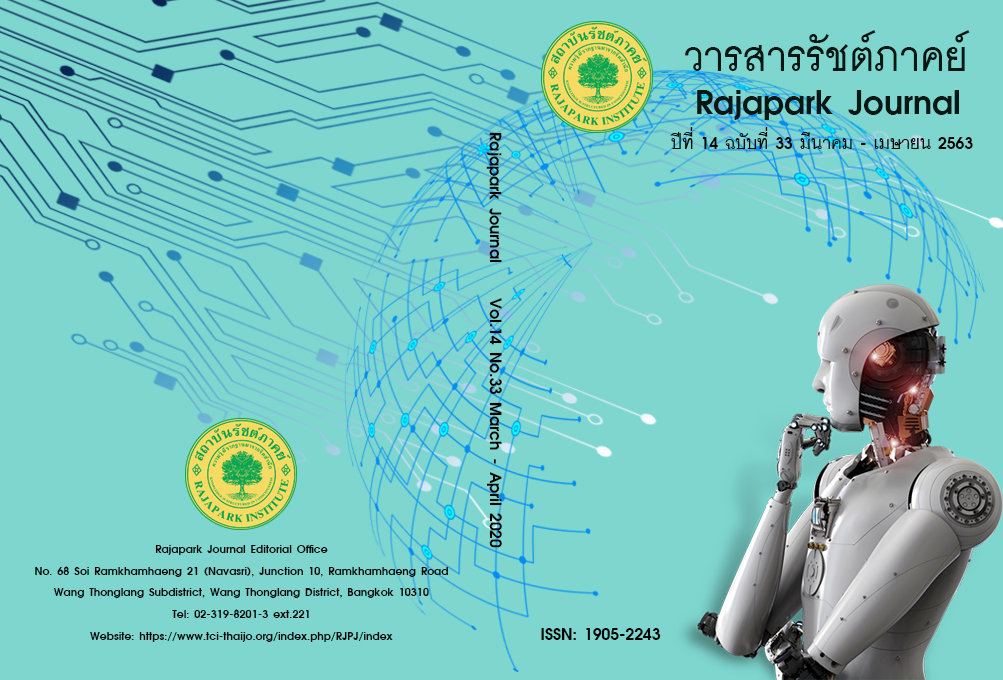Analysis of Global Connectivity of Kra Isthmus Canal Vision
Main Article Content
Abstract
This article is to study the possibility of developing Kra Isthmus Canal in Thailand. In the history of the project, there has been a suspension every time when someone raised this issue. The study collected data by researching relevant documents. The methods of the research included documentary information, case studies, and in-depth interviews with key informants. It was found that two major obstacles were the availability of specific advanced construction technology and the negative attitude of the Thai public towards dividing the mainland into two parts. However, since many years ago, the situation has changed horribly. Many countries, especially China, have supported the project and are ready to provide sufficient funding for the project in Thailand. Considering the infrastructure of Thailand in recent years, Thailand has continuously promoted spatial development in terms of important special economic zones. The progression of the Kra Isthmus Canal can be done because it is not like a special free trade area. The only difference is that in the previous movement, the man-made canal project in Thailand was studied by the government, and attacked by opinions from academics. The private sector and investors are the group that raised this project to create awareness among various publics. The role of China has been watched. In 2014, China announced the goal of the Silk Road, which connects China with all continents. Kra Isthmus canal responds to the vision. This study covers the important issues that the Kra Isthmus Canal has become a part of Thailand's leading infrastructure. At the same time, this development will eventually become very useful for global connections between the Indian Ocean and the Pacific Ocean. The canal will shorten the distance for more than 1,000 miles without passing through the Malacca Strait.
Article Details
Views and opinions appearing in the Journal it is the responsibility of the author of the article, and does not constitute the view and responsibility of the editorial team.
References
Amponstira, F., & Walsh, J. (2017). “Governance of Economic Spatial Initiatives,” International Review
of Management and Development Studies, 1(3), 1-5.
China-ASEAN Investment Cooperation Fund. Retrieved October 26, 2014, from
http://www.china-asean-fund.com/
Office of the National Economic and Social Development Board (NESDB), Thailand. (2012). Unbeatable Thailand,
Unparalleled Opportunities: Thailand’s infrastructure Development Plan and Opportunity. Retrieved from www.nesdb.go.th
Ohmae, K. (2005). The Next Global Stage: Challenges and Opportunities in our Borderless World. Wharton
School Publishing.
Sulong, Rini Suryati. (2012), The Kra Canal and Southeast Asian Relations. Journal of Current Southeast Asian
Affairs, 31(4), 109-125.
The Economist. (2013). An Asian Infrastructure Bank: Only Connect, Retrieved November 19, 2015, from
http://www.economist.com/blogs/ analects/2013/10/Asian-infrastructure-bank
The World Economic Forum. (2014, May 23). US$ 8 Trillion Needed to Bridge ASEAN’s Infrastructure Gap.
Retrieved from http://www.weforum.org/news/us-8- trillion-needed-bridge-Asian-s-infrastructure- gap.
Walsh, John. (2015, May 13). The Spatial Reconfiguration of Thailand’s Society and Economy after the Coup of
Retrieved November 19, 2015, from https://jcwalsh.wordpress.com/2015/05/13/the-spatial-reconfiguration-of-thailands-society-and-economy-after-the-coup-of-2014/


